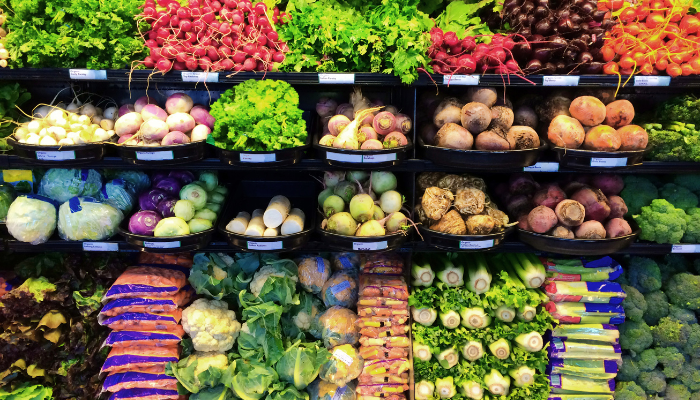
LATEST STORIES:


Food prices across Canada in 2024 are expected to go up again, but not as much as they did this year.
The 14th annual Canada’s Food Price Report released Thursday forecasts that the cost of food will increase by 2.5 per cent to 4.5 per cent next year.
More specifically, bakery, meat and vegetable prices are predicted to take the hardest hit with an increase of five to seven per cent in 2024.
This means the average family of four can anticipate spending $16,297.20 on food next year, up $701.79 from last year.
Predictions for 2024 Canadian food price increases
However, the report shows that food price hikes in 2024 will actually be lower than in past years, including this year when consumers saw an increase of five to seven per cent.
“The estimated increase of 2.5 to 4.5 per cent for 2024 provides customers with much-needed relief from the higher increases observed in previous years,” says Dr. Stuart Smyth, chair of Agri-Food Innovation and Sustainability Enhancement at the University of Saskatchewan.
“They should expect to see a degree of stability return to food prices. I am optimistic that the phrase “sticker-shock” will become less commonly used throughout grocery stores in 2024.”
Researchers from the University of Guelph, Dalhousie University, the University of Saskatchewan and the University of British Columbia created the report using historical data sources, machine learning algorithms and predictive analytics tools.
Scholars say a number of factors are contributing to rising food prices, such as climate-related events like flooding and wildfires that impact harvests.
Despite inflation, the report indicates that Canadians are spending less on food.
“People are either reducing the quantity of food that they’re buying, or they’re reducing the quality of food that they’re buying. This could be things like buying off brand. A term that I saw that I really liked was “less-etarianism.” says co-author of the report, Kristina Kupferschmidt.
It says food retail sales data shows a decline in monthly spending per capita between August 2022 and August 2023 from $261.24 to $252.89.
In the past year, estimated annual spending for a family of four was $693 lower than originally projected.
“This decrease is a concern to researchers,” scholars write in the report.
“Reduced expenditures in the face of elevated food prices indicate Canadians are decreasing the quantity and quality of food they are buying.”
The report predicts the high food inflation that’s persisted for the past few years will finally come to an end in 2024, returning to a more normal level as overall inflation does the same.
However, shoppers are still feeling the effects in the grocery aisles.
“I feel so bad about it because I retired a few years ago and now I’m really struggling. After 47 years of work I can hardly manage to do my groceries.” said one local shopper.
“I think it’s just greed that’s all it is.” said another.
This report comes as the country’s first ever grocery code of conduct is under development.
“We have seen in other countries that have similar codes of conduct that they are observing much lower rates of inflation than we’re seeing here in Canada.” says Kupferschmidt.
The federal government criticized the grocery sector Thursday for stalling the development process.
The code is seen by its advocates as a tangible way to bring more fairness, transparency and stability to the sector and supply chain.
The Bank of Canada hit pause on interest rate hikes in the final months of the year. Inflation isn’t yet at the central bank’s target rate, hitting 3.1 per cent in October. Grocery inflation, meanwhile, was at 5.4 per cent in October, lower than September but continuing to be elevated compared with the overall inflation rate.
– With files from The Canadian Press.
READ MORE: Canada’s inflation rate slowed to 3.1% in October